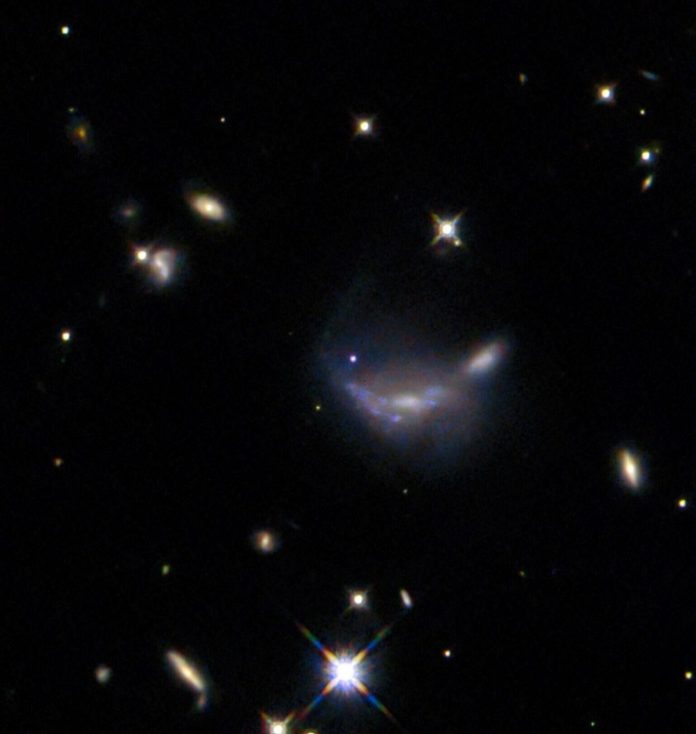
NASA’s Hubble Space Telescope has captured a stunning image of a faraway galaxy that recently hosted a supernova.
This galaxy, located about 600 million light-years away in the constellation Gemini, became the site of a massive star explosion known as SN 2022aajn.
The supernova appears as a bright blue dot in the center of Hubble’s image, standing out against the hazy glow of its host galaxy.
SN 2022aajn was first discovered in November 2022, but it has not been the focus of much scientific study—until now. Why did astronomers decide to observe it? The answer lies in its Type Ia supernova classification.
What is a Type Ia supernova?
A Type Ia supernova happens when the core of a dead star explodes. These explosions are extremely important for astronomers because they act like cosmic measuring tools.
What makes them special is that they always shine with the same intrinsic brightness, no matter where they occur.
This means that if scientists measure how bright a Type Ia supernova appears from Earth, they can calculate its true distance. By using this method, astronomers can accurately determine how far away galaxies are.
However, measuring these distances isn’t as simple as it sounds. Intergalactic dust can make supernovae look fainter and redder, just like distance does. This creates a challenge—how do we know if a supernova is actually far away, or if dust is just making it look dim?
To solve this problem, Hubble is conducting a detailed study of 100 Type Ia supernovae. It is observing them in seven different wavelengths, from ultraviolet to near-infrared light.
Why use infrared light?
This particular image of SN 2022aajn was created using four infrared wavelengths. Infrared light can pass through dust more easily than visible or ultraviolet light. By comparing the brightness of supernovae at different wavelengths, scientists can separate the effects of dust from distance, making their calculations more accurate.
This study will help researchers refine their methods for measuring the vast distances between galaxies, improving our understanding of the universe on a billions-of-light-years scale.
Thanks to Hubble, astronomers can keep unlocking the secrets of the cosmos—one supernova at a time!



